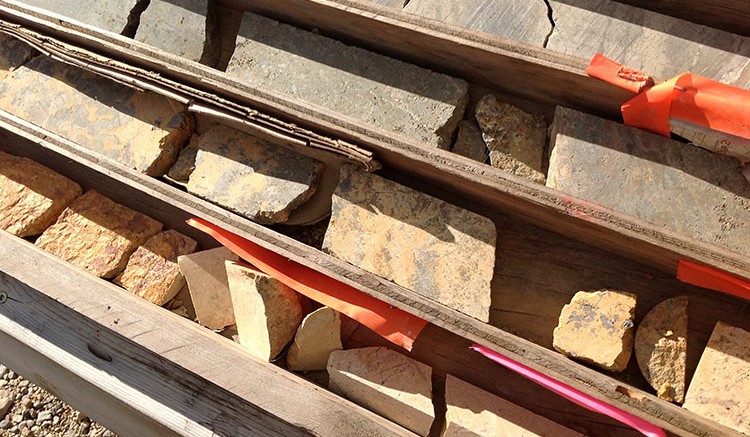After surviving a moribund market, junior miners can look forward to a less stressful 2013, says John Gravelle, mining leader for the Americas at PwC.
“I think we’ve seen the worst of things in the markets,” Gravelle said during an interview in late November. “It’s been a rough ride, but I think better times are ahead.”
PwC catalogued what has been a bleak year for juniors in its Junior Mine 2012 report, released in November. The consulting firm found equity financings by the top-100 juniors down by 41% to $1.6 billion this year, from $2.7 billion in 2011. The market capitalization of the same group fell by 43%.
But as 2012 comes to a close, Gravelle sees some encouraging signs.
This includes a $380-million bought-deal financing in October by Torex Gold (TXG-T) for its Morelos gold project in Mexico. Gravelle says that bought deals — which are riskier for brokers because they put up their own money to buy the complete offering of shares — fell out of favour in 2012 owing to a reduced appetite for risk in the market.
“The brokers tend to call all their clients and try to stay on top of them, to take their temperature about what the willingness is to invest, and from those conversations, they just were not comfortable that there was going to be that willingness to invest,” he says.
The other sign is a recent pick-up in mergers and acquisitions (M&A), with bigger companies snapping up gold juniors Calvista Gold (CVZ-T), Galway Resources (GWY-V), Prodigy Gold (PDG-V) and Queenston Mining (QMI-T).
“I guess what’s giving me confidence is that we’re starting to see, first this bought deal, then there’s also been some M&A activity in gold,” Gravelle says. “And when M&A comes, that sort of brings the markets back to life.”
The first three quarters of 2012 were slow for M&A, and Gravelle notes that mining companies had to look to untraditional sources for capital, such as streaming companies.
Royalty and streaming companies such as Franco-Nevada (FNV-T, FNV-N), Silver Wheaton (SLW-T, SLW-N) and Sandstorm Gold (SSL-T, SAND-X) have done a flurry of deals providing juniors and mid-tiers, including Hudbay Minerals (HBM-T, HBM-N) and Inmet Mining (IMN-T), with cash that was hard to find elsewhere.
In 2013, new trends in M&A are likely to emerge, including more mergers of equals.
“I think we’re going to see some mergers just for the sake of getting bigger,” Gravelle says, explaining that investors are preferring to invest in larger companies, even at the junior level.
In addition, Chinese state-owned entities (SOEs), which have so far stuck with industrial commodity investments such as those in iron ore in the Labrador Trough, are likely to start investing in gold.
The interest in gold among SOEs is fairly recent (within the last six months), Gravelle says, and it will take some time for deals to materialize because Chinese companies have more extensive internal controls and approval processes than their Western counterparts.
“We’ve seen a number of them in the look-see stage, so that’s telling me that in 2013, we’ll see deals get closed,” Gravelle says.
With a potential recovery for gold juniors already under way, other juniors could follow in 2013. Unlike gold prices, which have stayed at consistently high levels, the prices of base metals and bulk commodities have lost altitude.
“What we really need for base metals and for bulk commodities to come back is positive economic data coming out of China,” Gravelle says. “I think we’re going to see positive economic news in 2013.”
He points to the leadership transition in China, which may result in new infrastructure spending, and says the economy is poised for growth now that China has brought inflation — which was problematic a year ago — under control.
Gravelle says copper and base metals juniors will see an uptick first, then juniors in iron ore and other bulk commodities. He notes that copper miner Inmet Mining received an unsolicited takeover bid just last month from First Quantum Minerals (FM-T), which could point to a renewal for base metal companies if further deals are announced.
A final trend Gravelle sees for 2013 is a return to traditional mining jurisdictions in North America and South America, away from emerging markets, such as Asia.
“A lot of the emerging markets have gone through some form of resource nationalism, and that’s leading investment back to the traditional markets,” he says.
Indonesia, for example, has introduced measures requiring 51% local ownership of mines, and will no longer allow exports of unprocessed minerals as of 2014.
“If you made an investment in Indonesia and your business plan was to take the minerals and export them to China, your business plan now doesn’t work,” Gravelle says.
Within the Americas, Gravelle points to Peru and Mexico as jurisdictions that will keep attracting a great deal of investment. Although miners were initially concerned when Ollanta Humala was elected as president of Peru in 2011, he has been supportive of mining, and has increased taxes within reason.
In Canada, Quebec’s status as a favourite mining-friendly jurisdiction could be in danger if the newly elected Parti Québécois follows through on talk during the election campaign of increasing mining duties to 30% from 16%, plus adding a 5% royalty.
“They’ve said too much during the election to not do anything, but I’m hoping they’re going to consult with the industry and not go overboard on any additional tax reform,” Gravelle says.
— To read more by Alisha Hiyate, visit our sister publication MiningMarkets.ca


Be the first to comment on "Signs of life in the junior market"